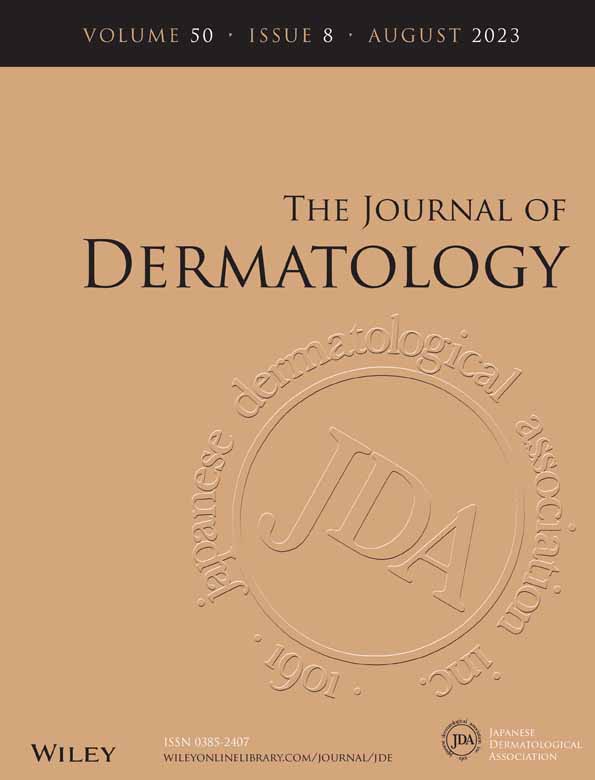Epidemiological study of antifungal-resistant dermatophytes isolated from Japanese patients
Abstract
An epidemiological study of antifungal drug-resistant dermatophytes was conducted as a follow-up to our 2020 survey. Dermatophytes were isolated in 2022 from the same dermatology clinics as in the previous study. In total, 288 Trichophyton interdigitale and Trichophyton rubrum clinical isolates were obtained from 288 human cases of dermatophytosis in Tokyo, Saitama, Shizuoka, and Kumamoto, Japan. Four strains were found to be resistant to terbinafine (TRF) and susceptible to itraconazole (ITZ), luliconazole (LCZ), and ravuconazole (RVZ), and three other strains were found to be resistant to ITZ and susceptible to TRF, LCZ, and RVZ. We determined the sequences of the squalene epoxidase (SQLE)-encoding gene in the three TRF-resistant T. rubrum strains, and found that two strains harbored L393F missense mutations, and one strain harbored a F397L missense mutation. The results of the present study indicated that the prevalence of TRF-resistant dermatophytes has not increased since 2020. However, TRF-resistant T. interdigitale (L393F mutation) was isolated for the first time, indicating that attention should be paid to the presence of TRF-resistant T. interdigitale in the future. We also examined for the first time the epidemiology of ITZ-resistant T. rubrum in Japanese patients. Although the number of ITZ-resistant strains was not large, the results confirmed that ITZ-resistant T. rubrum strains do exist in Japanese patients.
CONFLICT OF INTEREST STATEMENT
The authors declare no conflicts of interest.




